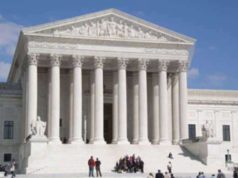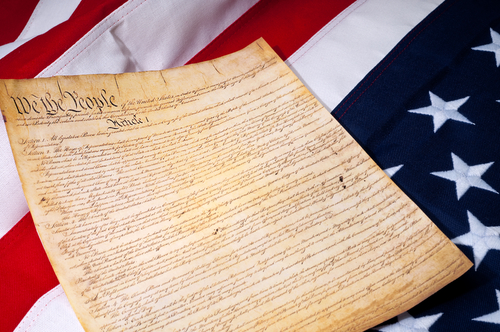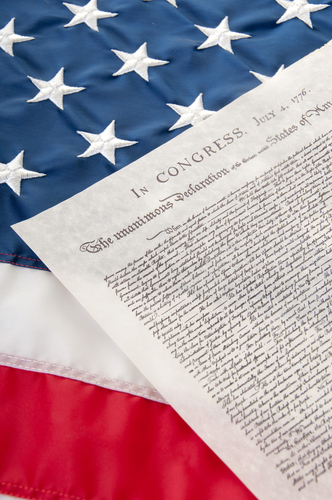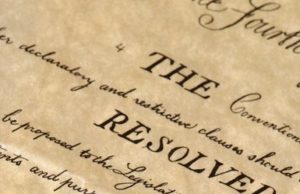Table of Contents

The Reconstruction Amendments: Restoring Freedom and Equality in America
Introduction
The Reconstruction Amendments are a trio of constitutional amendments that played a pivotal role in shaping the United States after the Civil War. Passed in the aftermath of the bloody conflict, these amendments aimed to address the deep-seated issues of slavery, citizenship, and equal protection under the law. The 13th, 14th, and 15th Amendments, collectively known as the Reconstruction Amendments, represent a remarkable turning point in American history. This article will delve into the historical context, significance, and enduring impact of these crucial amendments.
The 13th Amendment: Abolishing Slavery
The 13th Amendment to the United States Constitution, ratified on December 6, 1865, was the first of the Reconstruction Amendments. It is arguably one of the most significant amendments in American history as it effectively abolished slavery. The text of the amendment is straightforward:
“Neither slavery nor involuntary servitude, except as a punishment for crime whereof the party shall have been duly convicted, shall exist within the United States, or any place subject to their jurisdiction.”
Before the Civil War, slavery was deeply entrenched in the Southern states, where millions of African Americans were subjected to cruel and dehumanizing treatment as property. The 13th Amendment put an end to this horrific practice and marked a radical transformation in the nation’s values.
Historical Context:
To understand the historical context of the 13th Amendment, we must recognize the pivotal role of the Civil War. This bloody conflict, which raged from 1861 to 1865, was primarily fought over issues related to slavery, states’ rights, and the preservation of the Union. By the war’s end, President Abraham Lincoln and many others recognized the imperative need to eradicate slavery to ensure a more just and united nation.
Significance:
The 13th Amendment was a watershed moment for the United States, marking the end of a brutal system of forced labor that had persisted for centuries. It affirmed that every person, regardless of race, had the right to be free. However, it is essential to acknowledge the limitations of the amendment, as it did not entirely eliminate involuntary servitude, as noted in the clause allowing it as punishment for a crime. This loophole would be exploited in the post-Reconstruction South through practices like convict leasing, which disproportionately affected African Americans.
Impact:
The 13th Amendment not only abolished slavery but also set the stage for the subsequent Reconstruction Amendments. It laid the foundation for civil rights legislation and future Supreme Court decisions, such as the Civil Rights Cases of 1883 and Plessy v. Ferguson in 1896. While these decisions upheld racial segregation in various forms, the 13th Amendment’s abolition of slavery remained a powerful legal precedent in the fight for civil rights.
The 14th Amendment: Equal Protection and Due Process
The 14th Amendment, ratified on July 9, 1868, is perhaps the most far-reaching of the Reconstruction Amendments. It addresses citizenship, equal protection under the law, and due process. The key sections of the amendment are as follows:
Section 1: “All persons born or naturalized in the United States, and subject to the jurisdiction thereof, are citizens of the United States and of the State wherein they reside. No State shall make or enforce any law which shall abridge the privileges or immunities of citizens of the United States; nor shall any State deprive any person of life, liberty, or property, without due process of law; nor deny to any person within its jurisdiction the equal protection of the laws.”
Historical Context:
The 14th Amendment was a response to the tumultuous post-Civil War period, during which Southern states enacted “Black Codes” and “Jim Crow” laws that severely restricted the rights of newly freed African Americans. These laws aimed to maintain white supremacy and control the formerly enslaved population.
Significance:
The 14th Amendment was designed to address these discriminatory laws and ensure that all citizens, regardless of race, received equal protection under the law. It granted citizenship to former slaves and made it clear that states could not deprive any person of life, liberty, or property without due process. Additionally, it emphasized that no state could abridge the privileges or immunities of U.S. citizens.
Impact:
The 14th Amendment has had a profound and enduring impact on American jurisprudence. It became the legal basis for many landmark Supreme Court decisions that expanded civil rights and liberties. For instance, the case of Brown v. Board of Education (1954), which declared racial segregation in public schools unconstitutional, drew heavily on the equal protection clause of the 14th Amendment. Similarly, the 14th Amendment played a pivotal role in the legal battles of the Civil Rights Movement, culminating in the Civil Rights Act of 1964 and the Voting Rights Act of 1965.
The 15th Amendment: Voting Rights for All
The 15th Amendment to the United States Constitution was ratified on February 3, 1870. This amendment addresses the right to vote, explicitly prohibiting discrimination based on race, color, or previous condition of servitude. Its key section reads:
“Section 1: The right of citizens of the United States to vote shall not be denied or abridged by the United States or by any State on account of race, color, or previous condition of servitude.”
Historical Context:
The 15th Amendment emerged as a response to the ongoing struggle for voting rights among African Americans in the post-Civil War South. Despite the passage of the 14th Amendment, many Southern states continued to employ various tactics to disenfranchise Black voters.
Significance:
The 15th Amendment marked a significant milestone in the quest for racial equality by explicitly addressing the issue of voting rights. It aimed to eradicate racial discrimination at the ballot box and ensure that African Americans had the same political opportunities as white citizens.
Impact:
While the 15th Amendment represented a crucial step toward expanding voting rights, its implementation faced significant challenges. Southern states, through the use of tactics such as literacy tests, poll taxes, and violence, continued to disenfranchise African American voters in what became known as the Jim Crow era. It wasn’t until the Voting Rights Act of 1965 that significant federal intervention occurred, leading to the dismantling of these discriminatory practices.
Modern Interpretations and Challenges:
In contemporary times, the Reconstruction Amendments remain pivotal to discussions of civil rights, equality, and the role of government. The 14th Amendment, in particular, continues to be a cornerstone of constitutional law, shaping numerous Supreme Court cases involving issues ranging from abortion rights to marriage equality.
However, challenges to the spirit of these amendments persist. Voter suppression efforts, disproportionately affecting minority communities, are a concerning issue in the United States. Racial disparities in the criminal justice system and ongoing debates about affirmative action demonstrate that the principles addressed in the Reconstruction Amendments are still subjects of debate and litigation.
Conclusion
The Reconstruction Amendments, comprising the 13th, 14th, and 15th Amendments to the United States Constitution, stand as monumental achievements in the nation’s history. These amendments were born out of the tumultuous period following the Civil War and sought to address issues of slavery, citizenship, and equal protection under the law. Their historical significance cannot be overstated, as they laid the foundation for the ongoing struggle for civil rights and social justice in America.
The 13th Amendment’s abolition of slavery marked a pivotal moment in American history, while the 14th Amendment’s guarantee of
equal protection and due process has been instrumental in expanding civil rights. The 15th Amendment, despite initial challenges, set the stage for the eventual dismantling of discriminatory voting practices.
Though the United States has made significant progress since the passage of these amendments, challenges related to racial equality persist. The Reconstruction Amendments continue to serve as a beacon of hope and a legal framework for addressing these challenges, reminding us of the enduring importance of the principles they embody in shaping a more just and equitable society.
Reconstruction Amendments: The Cornerstone of America’s Journey towards Equality
Introduction
The Reconstruction Amendments serve as a testament to America’s commitment to rectifying the injustices of the past and promoting equal rights for all its citizens. These transformative constitutional amendments were ratified between 1865 and 1870, during the era known as Reconstruction, following the Civil War. With a vivid sense of urgency, they aimed to address the deep-rooted issues of slavery, citizenship, and voting rights that divided the nation. This article will explore the significance, unique provisions, and lasting impact of the Reconstruction Amendments, shedding light on their extraordinary historical journey.
The Thirteenth Amendment: A Pivotal Step towards Emancipation
The Thirteenth Amendment, ratified in December 1865, forever abolished slavery and involuntary servitude in the United States. This groundbreaking amendment not only signaled the end of an era marked by unspeakable human suffering but also redefined the nation’s moral compass. It ensured that no individual should be held in involuntary servitude, except as punishment for a crime, forcing a radical shift in societal norms.
Unique piece of information: Interestingly, the passage of the Thirteenth Amendment almost didn’t come to fruition. In April 1864, the Senate initially failed to muster the necessary two-thirds majority to send the proposed amendment to the states for ratification. It was only after President Abraham Lincoln pushed for reconsideration that the Thirteenth Amendment finally passed by a small margin.
The Fourteenth Amendment: Equal Protection and Citizenship
The Fourteenth Amendment, adopted in July 1868, has been dubbed the “crown jewel” of the Reconstruction Amendments. Its far-reaching provisions aimed to dismantle the institutionalized racism that oppressed African Americans by guaranteeing equal protection under the law.
Equal Protection Clause: This key provision prevents states from denying any person “equal protection of the laws.” Its intent was to eliminate discriminatory practices across the board, addressing both the oppressive Black Codes in Southern states and any discriminatory statutes enacted elsewhere.
Citizenship Clause: The Fourteenth Amendment introduced a profound change in the American concept of citizenship. It fundamentally revamped the definition of citizenship by declaring that all individuals “born or naturalized in the United States” are U.S. citizens, overturning the infamous 1857 Dred Scott decision that denied citizenship to African Americans.
Due Process Clause: This crucial clause ensures that no state can deprive any person of “life, liberty, or property without due process of law.” It acts as a safeguard against arbitrary government interference and protects individual rights from infringement.
Prior to the drafting of the Fourteenth Amendment, its architects contemplated extending suffrage rights to women. However, faced with staunch opposition, they decided to focus solely on ensuring citizenship and legal protections for African Americans. This omission would later become a rallying cry for the women’s suffrage movement.
The Fifteenth Amendment: Voting Rights for All Male Citizens
The Fifteenth Amendment, ratified in February 1870, represented a monumental step towards universal suffrage by declaring that the right to vote “shall not be denied or abridged on account of race, color, or previous condition of servitude.”
Unique piece of information: Contrary to popular belief, the Fifteenth Amendment did not immediately guarantee voting rights for all African American men. Southern states creatively employed poll taxes, literacy tests, and violence to suppress the Black vote. It would take more than a century of activism, legal battles, and grassroots movements to fully dismantle these discriminatory practices.
- Legacy and Ongoing Struggles
The Reconstruction Amendments laid the groundwork for countless civil rights milestones in American history, serving as a foundation for future activists seeking justice and equality. However, their implementation faced immense challenges, and their intended impact continues to be tested today.
Despite judicial interpretations shifting over time, the Reconstruction Amendments fundamentally altered the Constitution and challenged discriminatory practices that had plagued America since its inception. They formed the core of landmark legal cases, such as Brown v. Board of Education in 1954, which sought to dismantle segregation in schools, and the Civil Rights Act of 1964, which aimed to abolish racial discrimination across various domains.
Conclusion
The Reconstruction Amendments represent an unparalleled chapter in American history that aimed to rectify the nation’s deep-seated divisions and provide essential rights to its citizens. Through their adoption, the United States took a giant leap forward in addressing historical injustices and laying the foundations for equal protection, citizenship, and voting rights. However, their journey was riddled with challenges, and their impact continues to be tested in the ongoing quest for social justice.
As we reflect upon the Reconstruction Amendments, we should not only celebrate their historical significance but also recognize the unfinished work they symbolize. It is a shared responsibility to continue striving for equality and ensuring that these amendments, born out of the tumultuous era of Reconstruction, are fully and meaningfully realized for all Americans.
The Reconstruction Amendments are often referred to as Civil War Amendments. These are Amendments that were created and ratified in the five years following the Civil War, meaning between 1865 and 1870.
The necessity of the Reconstruction Amendments were to implement the important changes that were necessary in order to begin to reform and rebuild the United States to the envisioned status that was desired.
The Civil War Amendments are the Thirteenth, Fourteenth, and Fifteenth Amendments that are found in the U.S. Constitution. These Amendments were proposed and placed in the Constitution in order to give rights and protection to individuals who did not have them before. This essentially gave legal rights to the slaves who were set free during this time and promised not to discriminate against any other groups of individuals.
The Thirteenth Amendment was the Amendment that installed and legally abolished slavery in the United States. This was an important step in the unification of the north and south, as well as the progressive movement towards other legal
actions.
The Fourteenth Amendment, yet another of the Reconstruction Amendments, was the one that helped to redefine what was considered citizenship in the United States. This is also where the liberties and the rights of individuals were extended
and defined a bit more in order to encompass the broadening population of U.S. Citizens.
The Fifteenth Amendment was the final installation in the Civil War Amendments. This Amendment gave people, only males at this time, the right to vote regardless of race, color, or previous status in the United States. These Reconstruction Amendments helped to move the United States into a more unified and progressive nation.



























